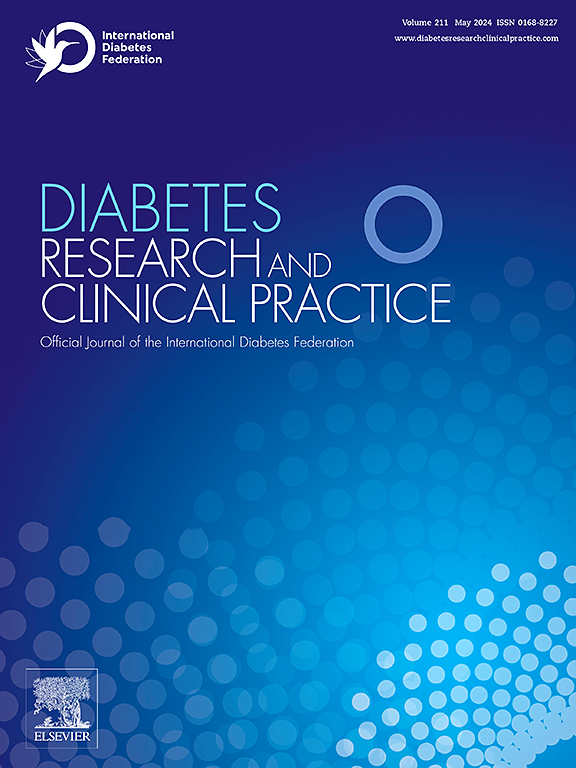揭示肥胖和 2 型糖尿病中增量素效应受损的原因:高血糖诱导的计划外糖酵解和糖酵解超负荷的关键作用。
IF 6.1
3区 医学
Q1 ENDOCRINOLOGY & METABOLISM
引用次数: 0
摘要
胰高血糖素样肽-1(GLP-1)激动剂以及 GLP-1 和葡萄糖依赖性促胰岛素多肽(GIP)联合激动剂是肥胖症患者和 2 型糖尿病(T2DM)患者的主要治疗选择。但它们并没有解决肥胖和 2 型糖尿病患者增量素效应受损的机理原因。增量素效应受损的特点是肠内分泌细胞分泌的增量素减少和胰腺β细胞的增量素抵抗。它与高血糖有关。我们提出的证据表明,在肠道内分泌细胞、胰腺β细胞和α细胞以及食欲调节神经元持续高血糖期间,主要通过葡萄糖激酶(己糖激酶-4)对葡萄糖进入糖酵解过程的门控进行颠覆,是增量素效应受损的生化机制之一。由此产生的计划外糖酵解和糖酵解过载会降低细胞对葡萄糖和其他分泌刺激物的增量素分泌信号以及增量素受体反应。这一机制为开发以恢复受损的增量素效应为目标的替代疗法提供了指导。本文章由计算机程序翻译,如有差异,请以英文原文为准。
Unraveling the impaired incretin effect in obesity and type 2 diabetes: Key role of hyperglycemia-induced unscheduled glycolysis and glycolytic overload
Glucagon-like peptide-1 (GLP-1) agonists and GLP-1 and glucose-dependent insulinotropic polypeptide (GIP) co-agonists are major treatment options for subjects with obesity and patients with type 2 diabetes mellitus (T2DM). They counter without addressing the mechanistic cause of the impaired incretin effect associated with obesity and T2DM. Incretin effect impairment is characterized by decreased secretion of incretins from enteroendocrine cells and incretin resistance of pancreatic β-cells. It is linked to hyperglycemia. We present evidence that subversion of the gating of glucose entry into glycolysis, mainly by glucokinase (hexokinase-4), during persistent hyperglycemia in enteroendocrine cells, pancreatic β- and α-cells and appetite-regulating neurons contributes to the biochemical mechanism of the impaired incretin effect. Unscheduled glycolysis and glycolytic overload thereby produced decreases cell signalling of incretin secretion to glucose and other secretion stimuli and incretin receptor responses. This mechanism provides a guide for development of alternative therapies targeting recovery of the impaired incretin effect.
求助全文
通过发布文献求助,成功后即可免费获取论文全文。
去求助
来源期刊

Diabetes research and clinical practice
医学-内分泌学与代谢
CiteScore
10.30
自引率
3.90%
发文量
862
审稿时长
32 days
期刊介绍:
Diabetes Research and Clinical Practice is an international journal for health-care providers and clinically oriented researchers that publishes high-quality original research articles and expert reviews in diabetes and related areas. The role of the journal is to provide a venue for dissemination of knowledge and discussion of topics related to diabetes clinical research and patient care. Topics of focus include translational science, genetics, immunology, nutrition, psychosocial research, epidemiology, prevention, socio-economic research, complications, new treatments, technologies and therapy.
 求助内容:
求助内容: 应助结果提醒方式:
应助结果提醒方式:


